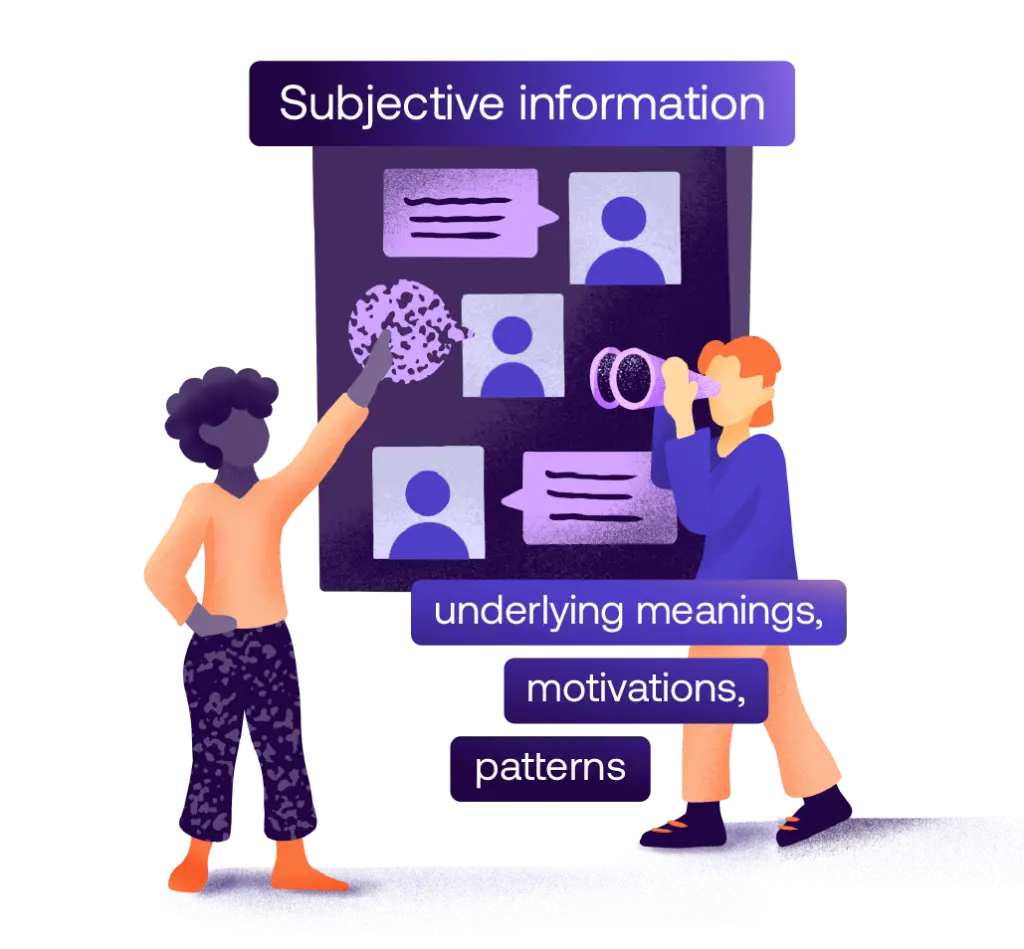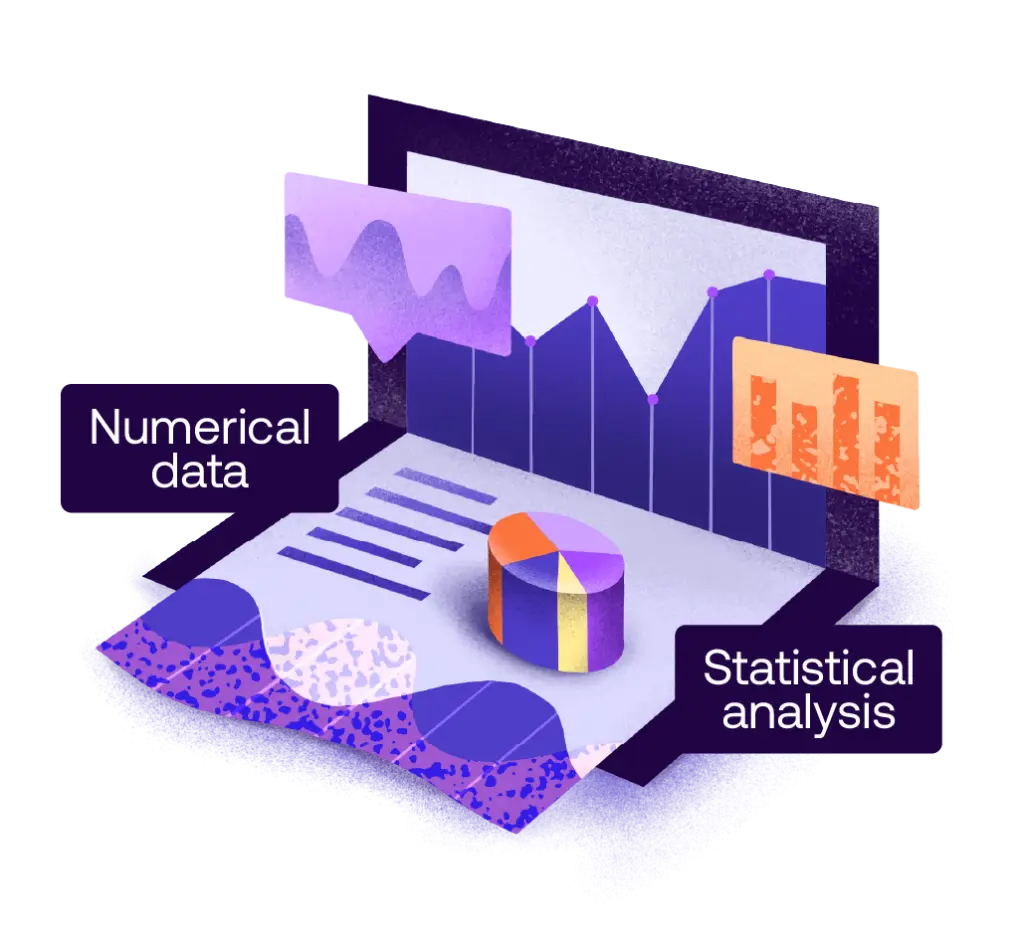The dynamics of insight generation are undergoing a transformative shift. The best teams in today’s fast-paced world are not merely the ones who produce insights but the ones who leverage them. As explored in a previous blog, the era of AI has helped us into a new age where production of insights can be handled and scaled by AI. Now more than ever, the Insight role can be elevated from a production mindset into strategically harnessing insights at scale and rapid speed for unprecedented business value.
The new Qualitative Insights Paradigm
Traditionally, insight generation from qualitative research involved labor-intensive processes, with human researchers methodically producing insights through a series of both project management as well as analytical steps. However, in this new era, focus is shifting from the production of insights, to their strategic, tactical and operational leverage.
The question arises: Are you at the forefront of leveraging these new and powerful qualitative insights, or are you still struggling to produce them in a timely and cost-efficient manner?
For us Qualitative research is all about the “Why” powered by Empathy
Qualitative research aims to understand and interpret behaviour, experiences, and phenomena in-depth. It is often explorative and seeks to gather non-numerical data, focusing on the richness and complexity of the subject under study. Qualitative research methods include interviews, focus groups, participant observation, and content analysis. Unlike quantitative research, which relies on numerical data and statistical analysis, qualitative research emphasizes the collection of subjective information, providing insights into the underlying meanings, motivations, and patterns within a given context


For many years, I have experienced how the quantitative space has surfaced more and more new methods in an attempt to get closer to the ‘Why’ behind the ‘What’, driven in large part because qualitative methods like focus groups and interviews have been expensive, slow, and unsuitable for modern agile workflows.
That has slowly moved the qualitative and quantitative offerings together, making what is in essence out of context insights become a cover for truly in context insights. Lately, I hear more and more social listening, open-ended questions, and other similar methods powered by BI and AI systems, collected in big clouds of data, being argued internally as in-depth qualitative insights. The balance between this, I think the insights world can discuss for a long time, however, we will leave that topic for another article.
The most important focus, must and always will be, to answer the questions that the business has, with the most efficient and rich insights that are available, in order to move the business forward. Being biased, I have seen again and again how the “a-ha” moments from consumer interviews are moving decisions forward in such a strong and powerful way, as they are rooted in empathy and real consumer interactions.
The Business Value of Leveraging Qualitative Insights
Leveraging qualitative insights isn’t just about having a wealth of data; it’s about getting your insights creation to fit with the decision-making process of the business lines. Most consumer brands of today do very little qualitative research, especially consumer interviews, as it doesn’t fit with their agile way of working and has been too expensive. Why the majority of Insights team today, work with quantitative methods.
This can now change, with the new era of Qualitative Insights, where running a study based on consumer interviews can be even faster than quantitative methods and cheaper than ever before!
This approach is the cornerstone for decision-making that is not only connected with the consumer but also fosters empathy and a profound understanding of the “why.”
Why does leveraging insights matter?
As mentioned in a previous blog, we’ve experienced three areas where consumer brands are leveraging this new agile in-depth research approach, and moving towards the operational and tactical use of these “Why” insights.
- Capture demand: Exploring consumers’ core needs and behavior
Here it is obvious: It is all about uncovering the underlying demands and behaviors of your consumers to capture market demand effectively, connecting your ideas and builds with the market - Reducing time to market and waste with idea-, concept- and hypothesis screening
Now you have an understanding of the space of which the consumer is in, what and why they are doing as they are. You might go into developing a product concept, a commercial concept, or other concrete vehicles for you to connect with the consumer in that space. Here you want to reduce time and waste by iterating with the consumers, testing and exposing those while you are working on it. - Getting better ROI of campaigns and distribution budgets
All of you sitting in marketing departments, know and experience this pain day in and day out. Short timelines make it almost impossible to pre-run your campaigns on a small sample of the audience before going live. Quantitative methods are the go-to, and those don’t help you understand how the message, campaign, etc really resonates with the consumer. Until now. With low cost and fast turnaround, you can pre-test your campaign, even on concept, storyboard, and sketch level before going too deep into production. A new era where it is about finding out how to run these pre-runs across the board, global, regional, and local, for all markets where you spend just a little budget, makes a huge ROI.
Empowering the Insights Team
For the insights team, the shift from being producers to provocateurs involves embracing the value creation of:

Reducing Time to Insight: Remove yourself from the actual production of Insights. AI-driven analysis accelerates the generation of insights, providing real-time information to inform timely decisions.

Bringing Actionable Insights: Move beyond raw data to deliver insights that are actionable, driving tangible impact throughout the organization.

Building Trust: Establish trust by consistently delivering accurate, high-quality insights that guide decision-making.

Storytelling & Innovation: Transform into storytellers and innovation drivers, communicating insights in compelling narratives that resonate across the organization.

From Auditors to Provocateurs: Shift from being mere auditors of data to provocateurs, challenging the status quo and pushing boundaries for innovation.
Conclusion: Embrace the New Era
The new era of Qualitative Insights powered by AI signifies a paradigm shift from insight production to strategic, tactical, and operational leverage. The question isn’t whether qualitative insights can be produced and fit agile ways of working; it’s how they can be harnessed to drive decisions, trust, and business success. Are you ready to embrace the future?

